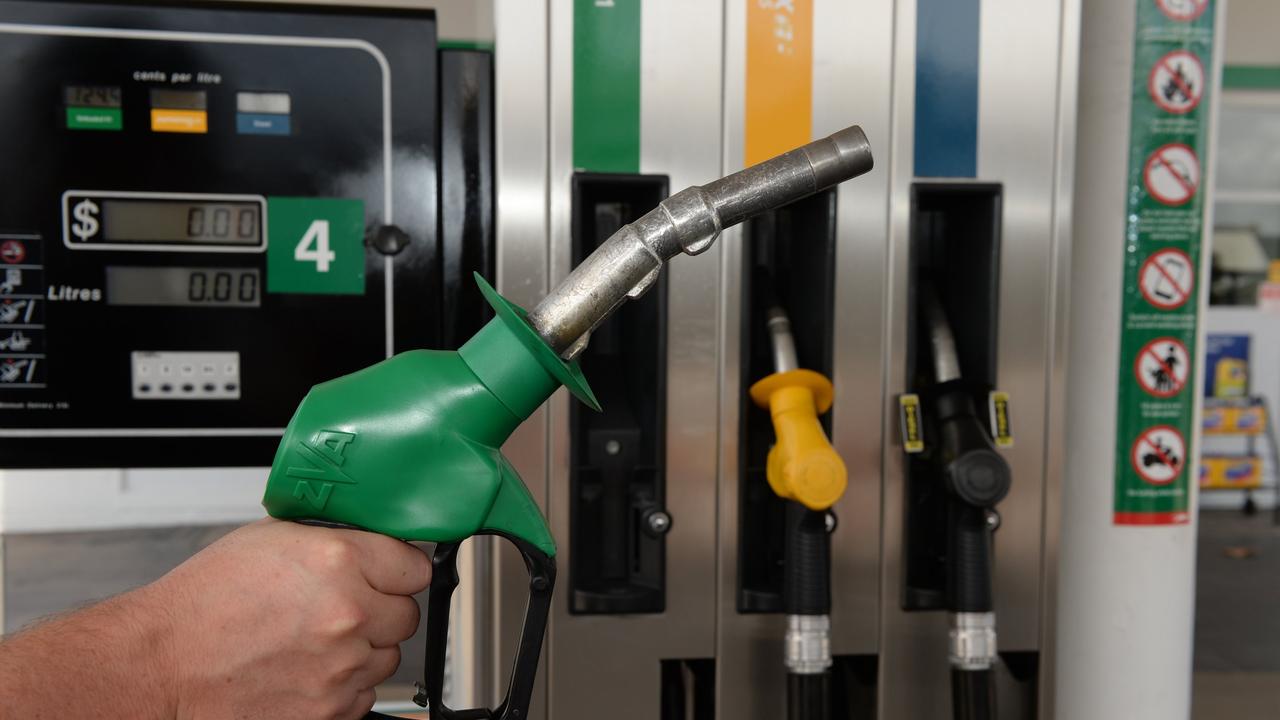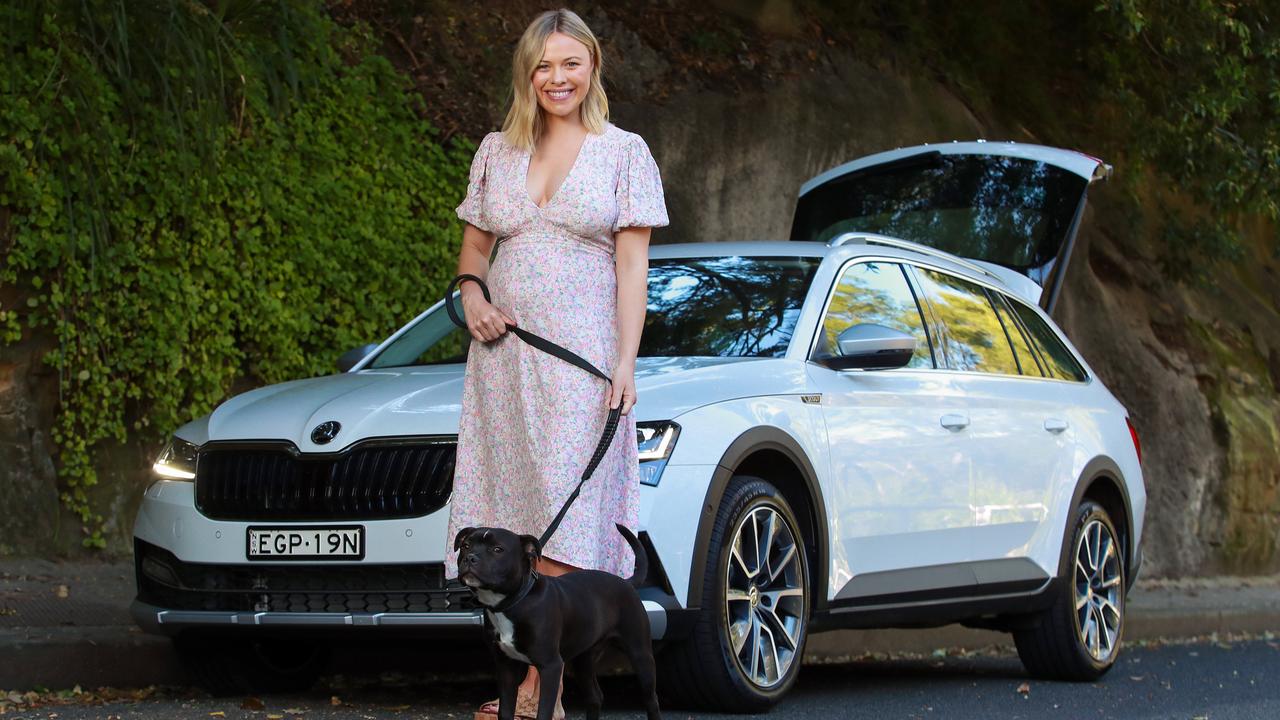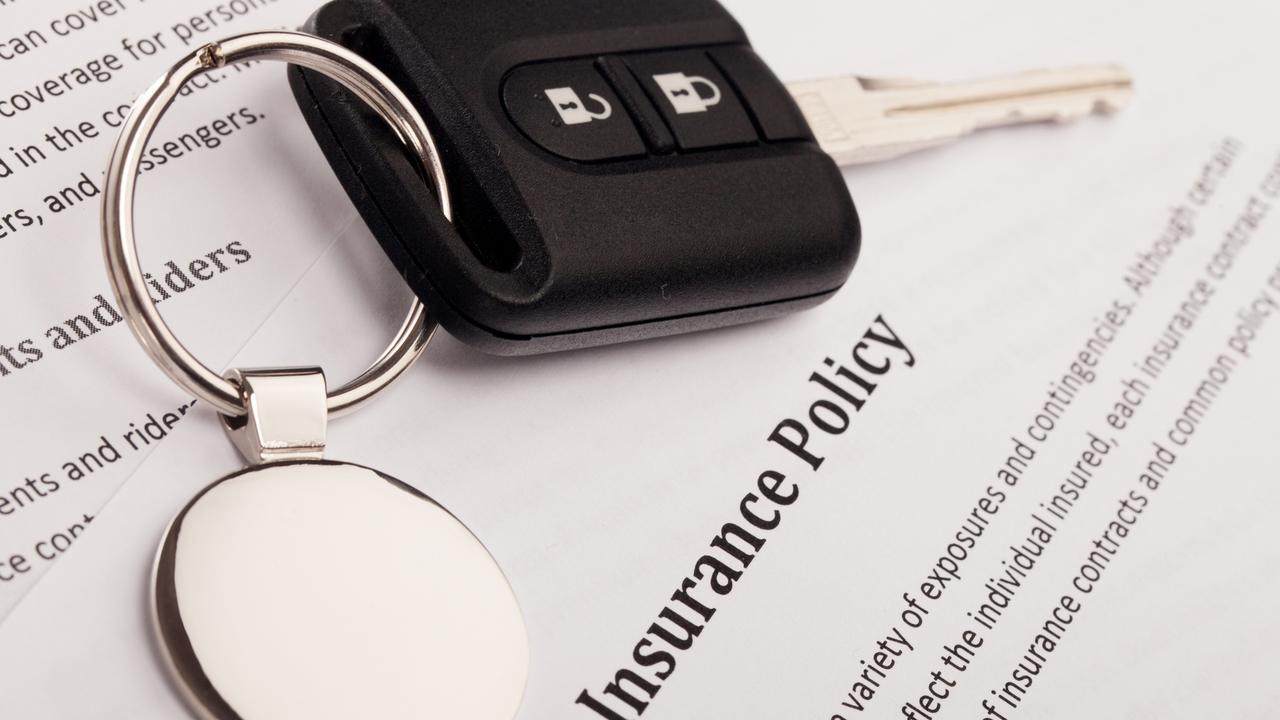Small car comparison review: VW Golf v Mazda3 v Ford Focus
Small hatchbacks are some of the most popular new cars in the country. Three of the best are put to the test to decide which is worth your hard earned.
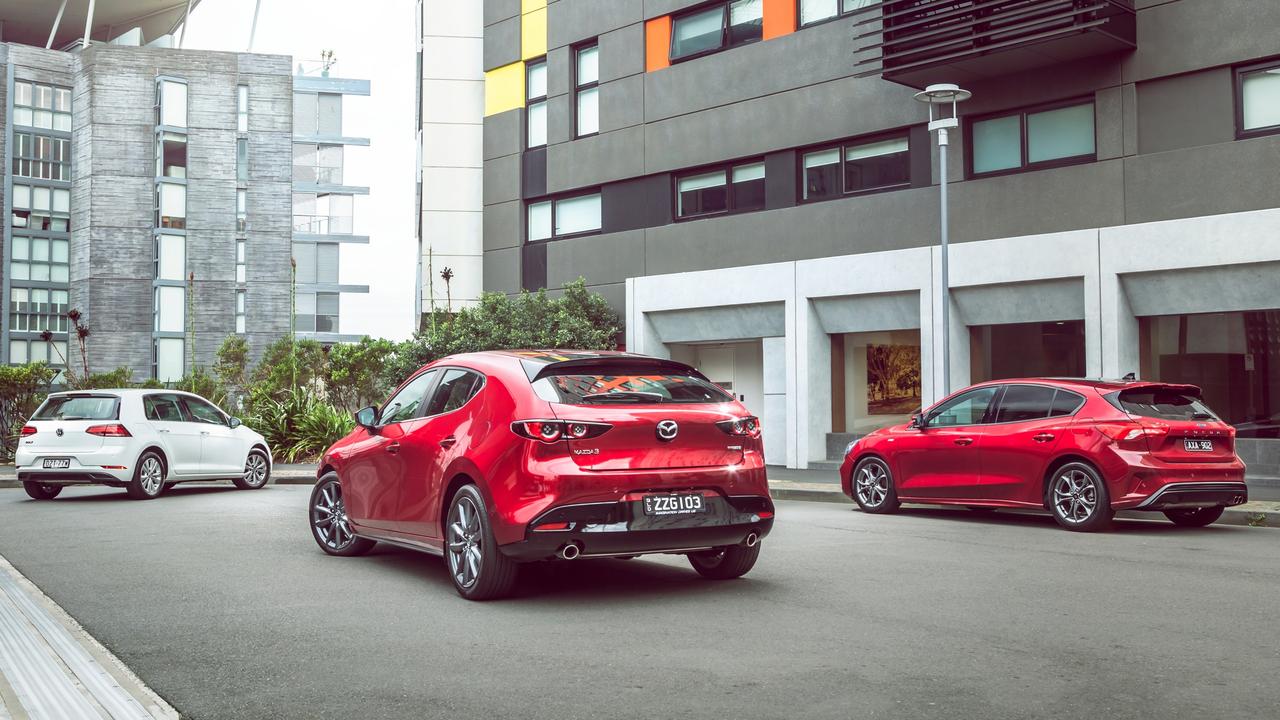
Mazda is setting its sights on becoming a step above its mainstream rivals. Launching the new 3, the brand said it was chasing premium buyers, with higher quality materials and higher price tags.
It’s a formula perfected by Volkswagen with its Golf, which has always felt a class above key rivals. It is due to be replaced soon but still regarded as a class benchmark.
Can the new Mazda knock it off its perch? Or will both be shaded by the impressive new Ford Focus, which edged out Hyundai’s i30 and the latest Toyota Corolla when we compared them in January.
VW Golf Trendline
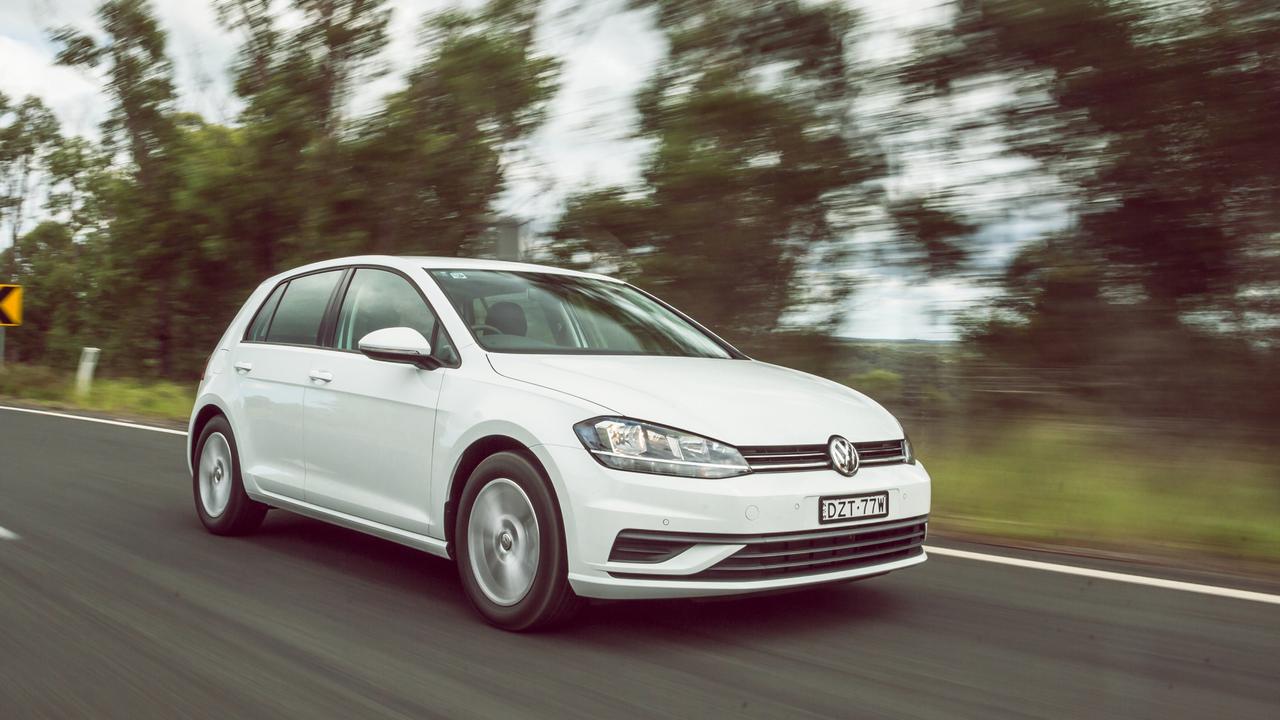
Back when small cars felt tinny, cheaply appointed and underwhelming on the road, the Golf shifted expectations with a combination of big-car refinement, pseudo-prestige build quality and soft-touch cabin materials.
The thunk of its doors was enough to woo some buyers. But the Golf Mk 7.5 seems a little plain today — and cold and functional compared to Ford’s sporty Focus ST-Line and the increasingly upmarket Mazda3.
There’s little to draw the eye in a cabin that’s home to grey cloth and plastics, save for the eight-inch touchscreen. All three cars here have Apple CarPlay/Android Auto but only the Golf goes without satnav.
Yet it stands tall on closer inspection, thanks in part to a practical layout. Boxy and anonymous on the outside, the Golf is a delight for rear passengers thanks to enormous windows, ample headroom and thoughtful inclusions such as rear air vents and an armrest curiously absent in Ford’s Focus.
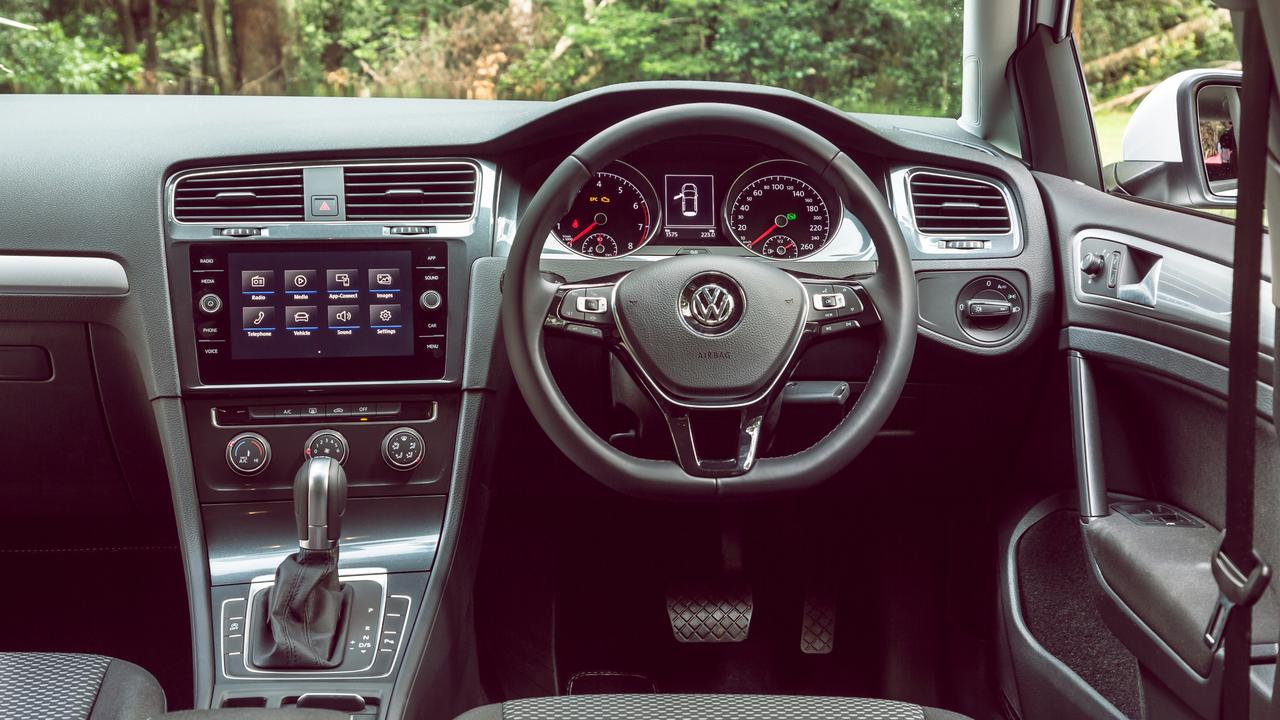
Its spacious boot entices those put off by the small cargo holds in the Mazda3 and Corolla.
Tested in entry-level Trendline auto form for $27,490 plus on-road costs (and on sale for $28,490 drive-away), the standard Golf gets autonomous emergency braking, reversing camera and parking sensors at each end. Further driver aids such as active cruise control, blind spot monitoring and rear cross traffic alert are in a $1500 option pack.
Buyers also need to budget more for servicing costs — the Golf will set you back about $900 more than the others at the dealership over the first five years of ownership. But they’ll save money at the bowser as VW’s claimed fuel economy comfortably undercuts rivals here.
The Golf’s 1.4-litre turbo is a gem. Smooth, quiet and the torquiest of the three, it propels the lightest car here for effortless progress. VW’s seven-speed dual-clutch automatic is fluid at cruising speed but grabby when parking.
Light on its feet, the Golf feels polished on the road, even if effortless steering and comfort-oriented tyres don’t exude sportiness. Taut suspension settings can jiggle occupants more than you might hope on broken urban backstreets but it feels planted and composed on country roads.
Ford Focus ST-Line
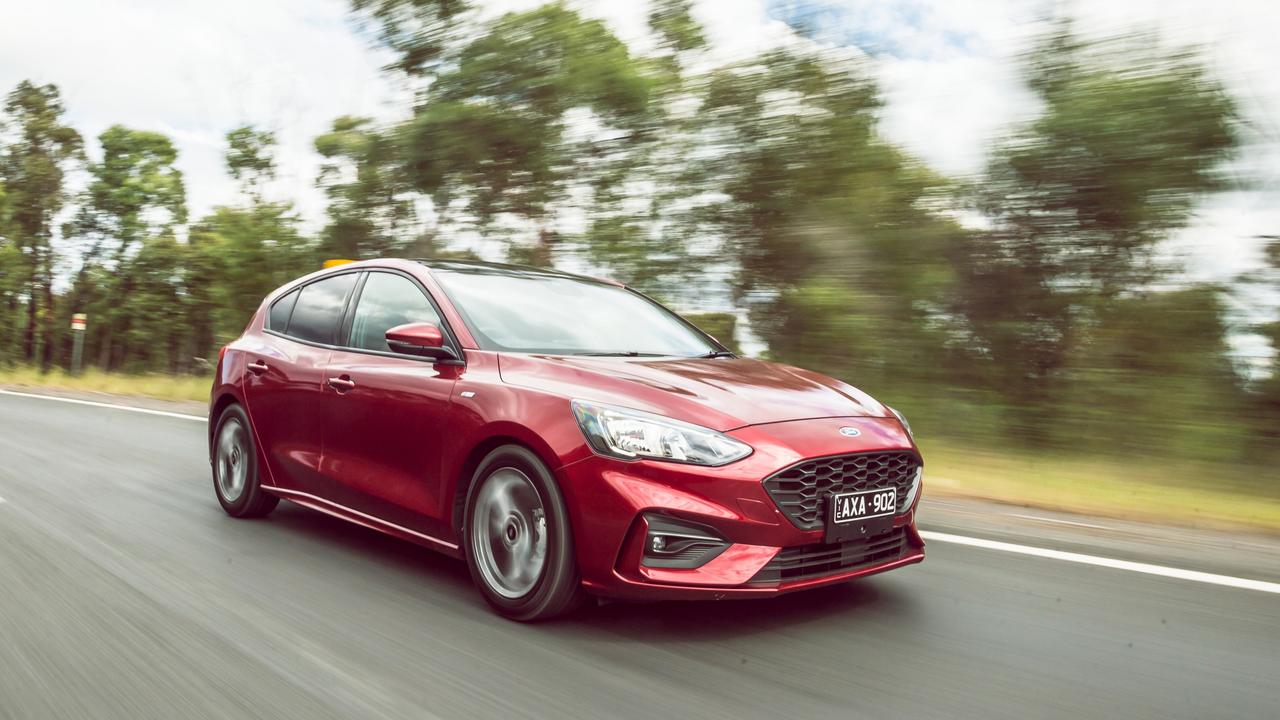
Sporty dynamics, the core of the Focus, are further enhanced in the ST-Line. Pitched between the vanilla Focus and Golf GTI-rivalling Focus ST, this ST-Line brings lower and firmer suspension, along with sports seats, new steering wheel and added aesthetic touches.
Priced from $28,990 plus on-roads, the Ford brings impressive features such as a digital dash and widescreen reversing camera — though you need to spend $1250 for the safety pack with extra features such as active cruise control.
Its five-year warranty is on par with the two rivals and, as its trade-off for being the most expensive on the forecourt, it’s the cheapest to service at $299 per visit for the first four years.
Drab on the inside but purposeful on the road, the Focus looks good to our eyes and drives even better — it’s capable of delivering an uncanny impression of a hot hatch when driven with gusto.
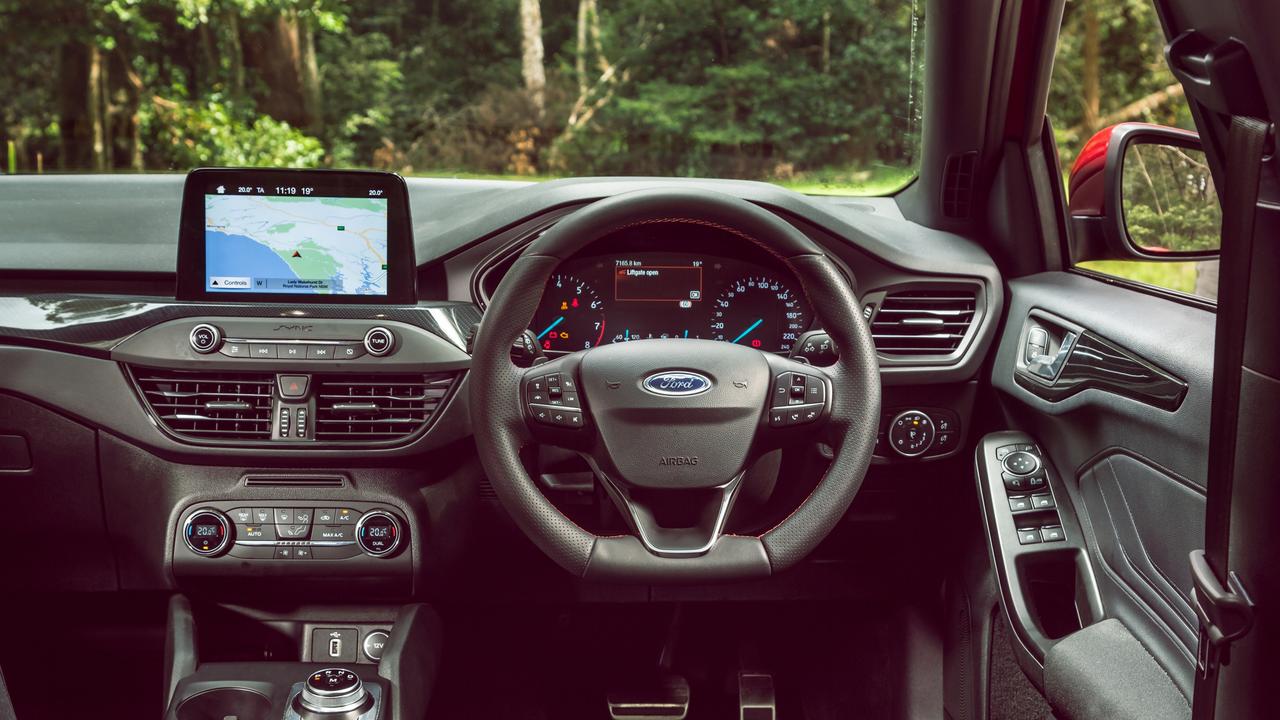
Planted and responsive, there’s no question it is the driver’s pick here. Meaty steering, outstanding ergonomics and willing engine make the Focus a joy to drive, with the caveat that it prioritises poise over ride comfort.
Don’t be put off by the Focus’s cylinder count, as the 1.5-litre triple pulls hard throughout the rev range, its efforts accompanied by a charming offbeat tune.
As with the Golf, Ford’s sophisticated gearbox works well when pressing on or cruising at speed. But the eight-speed conventional auto is hit-and-miss around town, taking its time when shifting between drive and reverse before the transmission thumps into gear.
Three-point turns are a pain, not helped by the Focus’s new rotary transmission controller. Its poorly placed traction control button is easily disengaged.
Rear passengers get a raw deal. Supportive seats do little to compensate for the missing centre arm rest and aircon vents, and taller occupants might bump heads on the roof.
Mazda3 G20 Evolve
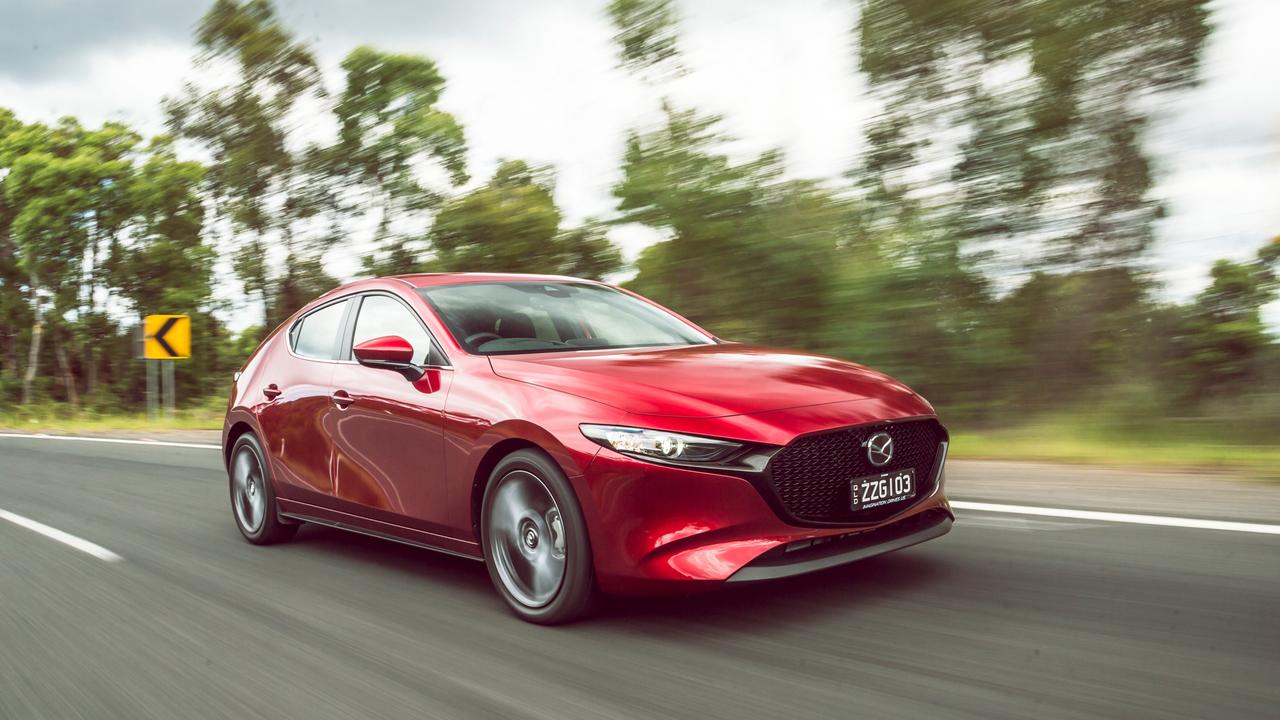
The rear seat could prove an Achilles’ heel for the new Mazda3.
Svelte styling means its swooping roofline compromises headroom for rear occupants and the upswept window line limits outward vision, especially for kids. The driver’s over-the-shoulder view is compromised as well.
Is that a price worth paying for what might be the best-looking car in its class?
Young professionals might say yes but families are likely to move in another direction — perhaps to Mazda’s growing range of SUVs.
The front seats add to the impressive list of standard features, among them soft-touch materials, head-up display and widescreen infotainment suite with the sort of rotary controller normally found in European luxury cars.
Safety kit includes autonomous braking (forward and reverse), active cruise control, lane keeping assistance, blind spot monitoring and rear cross traffic alert.
The maker drew a line in the sand with this fourth-generation Mazda3, dropping cheap models to concentrate on feature-laden vehicles popular with private buyers.
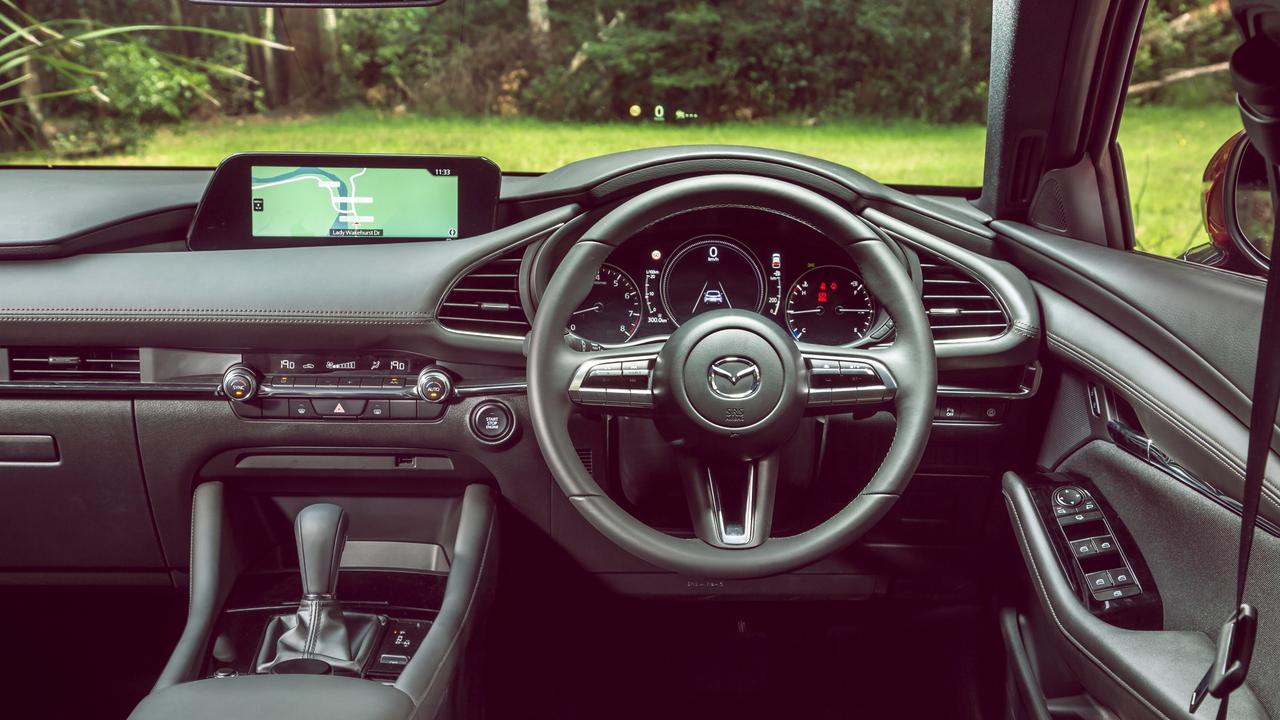
Priced from $27,690 plus on-roads in auto form, the G20 Evolve represents sharp value.
Mazda saved a few bucks with the carryover engine from the last-gen hatch. The 2.0-litre’s outputs (114kW/200Nm) look adequate on paper but the engine feels breathless compared to turbo rivals, particularly when overtaking or climbing steep hills.
It’s fine around town — the conventional six-speed auto works astutely when manoeuvring at low speed — but buyers who want some wallop should plump for the 2.5-litre or wait for the supercharged Skyactiv-X version.
The Mazda3 feels impressively quiet on the road, bringing a ride that, in common with the VW, prioritises taut body control over pillowy bump absorption. Unruffled on winding roads, the Mazda3 remains great to drive, even if it’s not quite as involving as the Focus.
Verdict
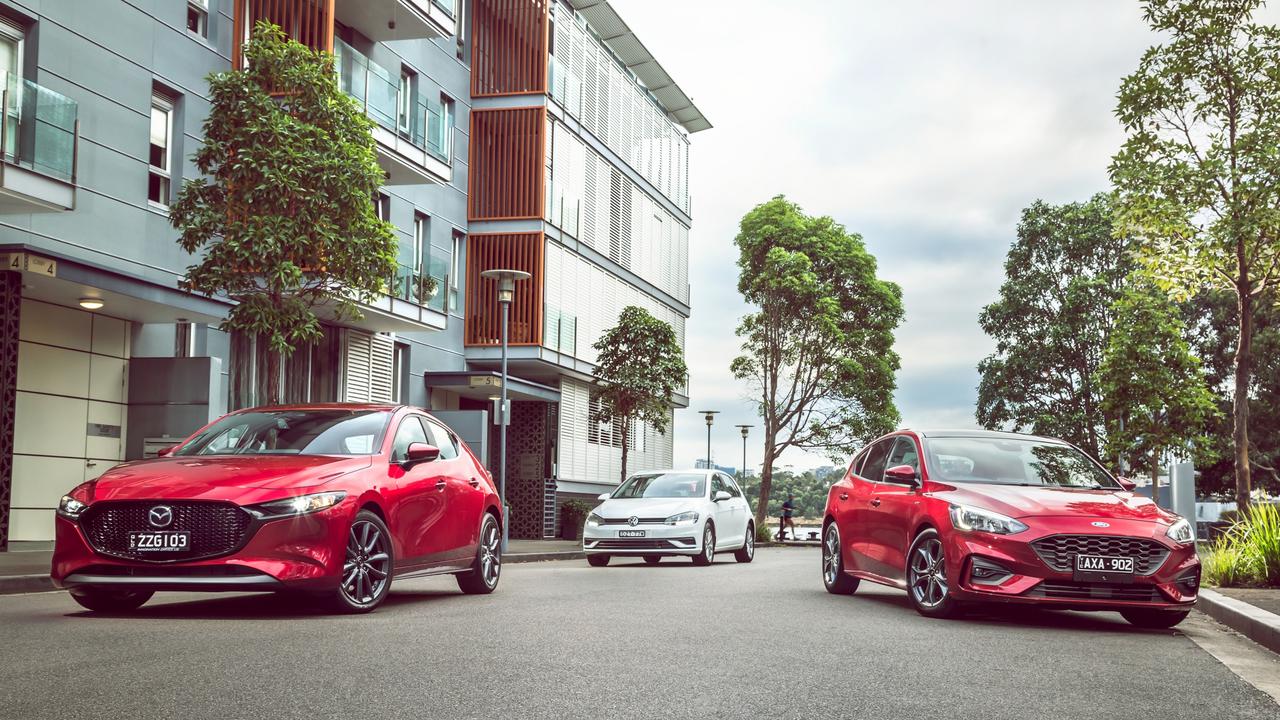
For a dash of sportiness, consider the Focus — but its bumpy ride, frustrating transmission and plain cabin earn the bronze medal here. The Golf, though dated, has plenty going for it — particularly the sharp drive-away deals — and is the one to buy if the rear seat gets regular use. A fuss-free drive that’s packed with features and premium appeal, the Mazda3 leaves a lasting impression and is easy to recommend.
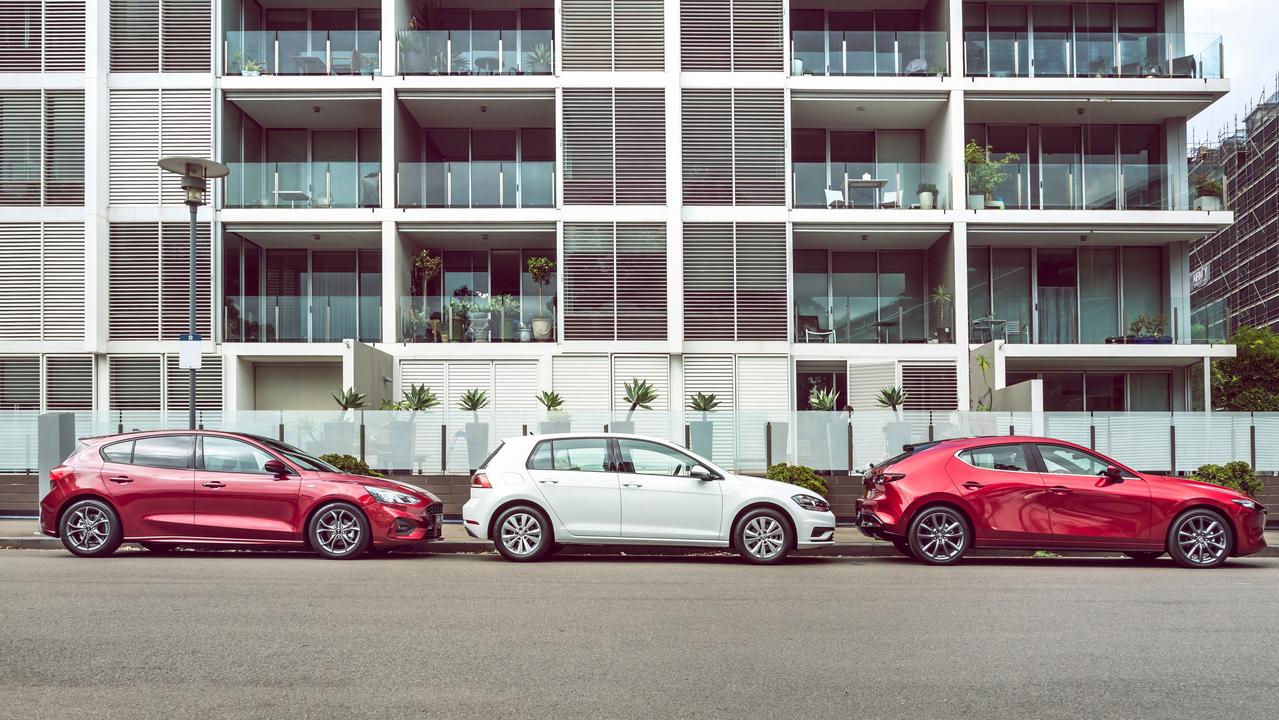
Mazda3 G20 Evolve
Price: $27,690 plus on-roads
Warranty/servicing: 5 years/unlimited km, $1558 for 5 years
Engine: 2.0-litre 4-cyl, 114kW/200Nm
Safety: Not yet rated, 7 airbags, AEB, active cruise, blind spot monitoring, rear cross traffic alert
Thirst: 6.1L/100km
Spare: Space-saver
Boot: 295L
VW Golf Trendline
Price: $27,490 plus on-roads
Warranty/servicing: 5 years/unlimited km, $2446 for 5 years
Engine: 1.4-litre 4-cyl turbo, 110kW/250Nm
Safety: 5 stars, 7 airbags, AEB (more in $1500 safety pack)
Thirst: 5.6L/100km
Spare: Space-saver
Boot: 380L
Ford Focus ST-Line
Price: $28,990 plus on-roads
Warranty/servicing: 5 years/unlimited km, $1541 for 5 years
Engine: 1.5-litre 3-cyl turbo, 134kW/240Nm
Safety: 5 stars, 6 airbags, AEB, lane keeping assistance (more in $1250 safety pack)
Thirst: 6.4L/100km
Spare: Temporary
Boot: 341L

